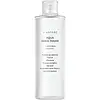What's inside
What's inside
 Key Ingredients
Key Ingredients

 Benefits
Benefits

 Concerns
Concerns

No concerns
 Ingredients Side-by-side
Ingredients Side-by-side

Water
Skin ConditioningGlycerin
HumectantTrehalose
HumectantGlyceryl Stearate
EmollientCoco-Caprylate/Caprate
EmollientPolyglyceryl-3 PCA
EmollientPropanediol
SolventPrunus Amygdalus Dulcis Oil
Skin ConditioningAvena Sativa Kernel Extract
AbrasivePrunus Amygdalus Dulcis Seed Extract
Skin ConditioningHydrogenated Olive Oil Caprylyl Esters
Emulsion StabilisingMacadamia Ternifolia Seed Oil
EmollientHydrolyzed Rice Protein
Skin ConditioningHyaluronic Acid
HumectantTriheptanoin
Skin ConditioningTrilaurin
Skin ConditioningCeteareth-12
EmulsifyingCeteareth-20
CleansingHydrolyzed Glycosaminoglycans
HumectantHydrogenated Lecithin
EmulsifyingTocopherol
AntioxidantCetearyl Alcohol
EmollientCetyl Palmitate
EmollientPotato Starch Modified
Tocopheryl Acetate
AntioxidantCitric Acid
BufferingSodium Citrate
BufferingXanthan Gum
EmulsifyingParfum
MaskingTetrasodium Glutamate Diacetate
Sodium Hydroxide
BufferingPhenoxyethanol
PreservativeDehydroacetic Acid
PreservativePotassium Sorbate
PreservativeSodium Benzoate
MaskingBenzyl Alcohol
PerfumingWater, Glycerin, Trehalose, Glyceryl Stearate, Coco-Caprylate/Caprate, Polyglyceryl-3 PCA, Propanediol, Prunus Amygdalus Dulcis Oil, Avena Sativa Kernel Extract, Prunus Amygdalus Dulcis Seed Extract, Hydrogenated Olive Oil Caprylyl Esters, Macadamia Ternifolia Seed Oil, Hydrolyzed Rice Protein, Hyaluronic Acid, Triheptanoin, Trilaurin, Ceteareth-12, Ceteareth-20, Hydrolyzed Glycosaminoglycans, Hydrogenated Lecithin, Tocopherol, Cetearyl Alcohol, Cetyl Palmitate, Potato Starch Modified, Tocopheryl Acetate, Citric Acid, Sodium Citrate, Xanthan Gum, Parfum, Tetrasodium Glutamate Diacetate, Sodium Hydroxide, Phenoxyethanol, Dehydroacetic Acid, Potassium Sorbate, Sodium Benzoate, Benzyl Alcohol
Water
Skin ConditioningDipropylene Glycol
HumectantButylene Glycol
HumectantGlycerin
Humectant1,2-Hexanediol
Skin ConditioningBetaine
HumectantPanthenol
Skin ConditioningAllantoin
Skin ConditioningCarica Papaya Fruit Extract
Skin ConditioningGluconolactone
Skin ConditioningXylitylglucoside
HumectantAnhydroxylitol
HumectantXylitol
HumectantSodium Hyaluronate
HumectantGlucose
HumectantPapain
Skin ConditioningHydroxypropyltrimonium Hyaluronate
Sodium Acetylated Hyaluronate
HumectantHydrolyzed Hyaluronic Acid
HumectantHyaluronic Acid
HumectantHydrolyzed Sodium Hyaluronate
Skin ConditioningSodium Hyaluronate Crosspolymer
HumectantPotassium Hyaluronate
Skin ConditioningGlyceryl Acrylate/Acrylic Acid Copolymer
HumectantPvm/Ma Copolymer
Emulsion StabilisingWater, Dipropylene Glycol, Butylene Glycol, Glycerin, 1,2-Hexanediol, Betaine, Panthenol, Allantoin, Carica Papaya Fruit Extract, Gluconolactone, Xylitylglucoside, Anhydroxylitol, Xylitol, Sodium Hyaluronate, Glucose, Papain, Hydroxypropyltrimonium Hyaluronate, Sodium Acetylated Hyaluronate, Hydrolyzed Hyaluronic Acid, Hyaluronic Acid, Hydrolyzed Sodium Hyaluronate, Sodium Hyaluronate Crosspolymer, Potassium Hyaluronate, Glyceryl Acrylate/Acrylic Acid Copolymer, Pvm/Ma Copolymer
 Reviews
Reviews

Ingredients Explained
These ingredients are found in both products.
Ingredients higher up in an ingredient list are typically present in a larger amount.
Glycerin is already naturally found in your skin. It helps moisturize and protect your skin.
A study from 2016 found glycerin to be more effective as a humectant than AHAs and hyaluronic acid.
As a humectant, it helps the skin stay hydrated by pulling moisture to your skin. The low molecular weight of glycerin allows it to pull moisture into the deeper layers of your skin.
Hydrated skin improves your skin barrier; Your skin barrier helps protect against irritants and bacteria.
Glycerin has also been found to have antimicrobial and antiviral properties. Due to these properties, glycerin is often used in wound and burn treatments.
In cosmetics, glycerin is usually derived from plants such as soybean or palm. However, it can also be sourced from animals, such as tallow or animal fat.
This ingredient is organic, colorless, odorless, and non-toxic.
Glycerin is the name for this ingredient in American English. British English uses Glycerol/Glycerine.
Learn more about GlycerinHyaluronic acid is naturally found in healthy skin. It is a humectant, meaning it draws moisture to your skin.
This ingredient helps hydrate, soothe, and protect the skin.
What makes hyaluronic acid so hydrating? It has the capacity to bind or hold large amounts of water.
Fun fact: It is already naturally found in our bodies, such as the fluids of our eyes and our joints.
Studies find this ingredient to have anti-inflammatory and anti-microbial properties. This can help speed up wound-healing.
Hyaluronic acid can be irritating if the molecule has a low-molecular weight, or if the molecules are small.
One study found low-molecular weight hyaluronic acid to be pro-inflammatory, meaning some people may experience irritation. This is because our bodies use hyaluronic acid in the wound-healing process to signal to our bodies, via irritation, that something needs healing.
The same study found high-molecular weight hyaluronic acid to be anti-inflammatory.
These are some other common types of Hyaluronic Acid:
Learn more about Hyaluronic AcidWater. It's the most common cosmetic ingredient of all. You'll usually see it at the top of ingredient lists, meaning that it makes up the largest part of the product.
So why is it so popular? Water most often acts as a solvent - this means that it helps dissolve other ingredients into the formulation.
You'll also recognize water as that liquid we all need to stay alive. If you see this, drink a glass of water. Stay hydrated!
Learn more about Water